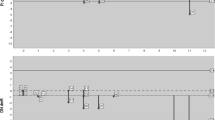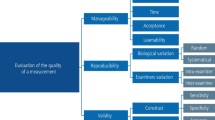Abstract
Aim To assess the use of teledenistry (TD) via photographs taken at home in identifying occlusal and vestibular caries by comparing the results with direct clinical assessment.
Study design Cross-sectional pilot study.
Methods In total, 43 dental students were recruited. The subjects were sent a protocol curated by the authors, outlining the required photographic views. Out of the ten photographs taken (five with flash, five without), the best five were selected for caries assessment by one clinician. The caries assessment was based on the International Caries Assessment System (ICDAS II). The students were then assessed in clinic by a second clinician and the results compared. Statistical analysis was then undertaken.
Results A total of 430 photographs were sent in and 215 photographs were selected for analysis. In total, 1,201 teeth were analysed on 43 patients. Statistical tests showed TD to have a sensitivity of 74.0, specificity 99.1, a positive predictor value of 91.7 and a negative predictive value of 96.4. A Spearman correlation was undertaken for TD and caries detection, with a value of 0.816.
Conclusions The results of this study showed that there is potential for reliably incorporating TD into routine caries diagnosis.
This is a preview of subscription content, access via your institution
Access options
Subscribe to this journal
Receive 4 print issues and online access
$259.00 per year
only $64.75 per issue
Buy this article
- Purchase on Springer Link
- Instant access to full article PDF
Prices may be subject to local taxes which are calculated during checkout
Similar content being viewed by others
References
Fricton J, Chen H. Using teledentistry to improve access to dental care for the underserved. Dent Clin North Am 2009; 53: 537-548.
Rocca M A, Kudryk V L, Pajak J C, Morris T. The evolution of a teledentistry system within the Department of Defense. Proc AMIA Symp 1999; 921-924.
May C, Giles L, Gupta G. Prospective observational comparative study assessing the role of store and forward teledermatology triage in skin cancer. Clin Exp Dermatol 2008; 33: 736-739.
Satish V, Cm P, Kv H. Occult Caries: The Hidden Truth. Int J Clin Paediatr Dent 2010; 3: 225-229.
AlShaya M, Farsi D, Farsi N, Farsi N. The accuracy of teledentistry in caries detection in children - A diagnostic study. Digit Health 2022; DOI: 10.1177/20552076221109075.
Author information
Authors and Affiliations
Ethics declarations
The author declares no conflict of interest.
Rights and permissions
About this article
Cite this article
Crowder, L. Can teledentistry - in particular, photographs - be used to accurately diagnose caries and healthy teeth?. Evid Based Dent 23, 154–155 (2022). https://doi.org/10.1038/s41432-022-0848-4
Received:
Accepted:
Published:
Issue Date:
DOI: https://doi.org/10.1038/s41432-022-0848-4
This article is cited by
-
Legal issues in digital oral health: a scoping review
BMC Health Services Research (2024)
-
EBD spotlight: Can teledentistry be used to accurately diagnose dental caries?
BDJ Team (2023)
-
Developing slowly
British Dental Journal (2023)



